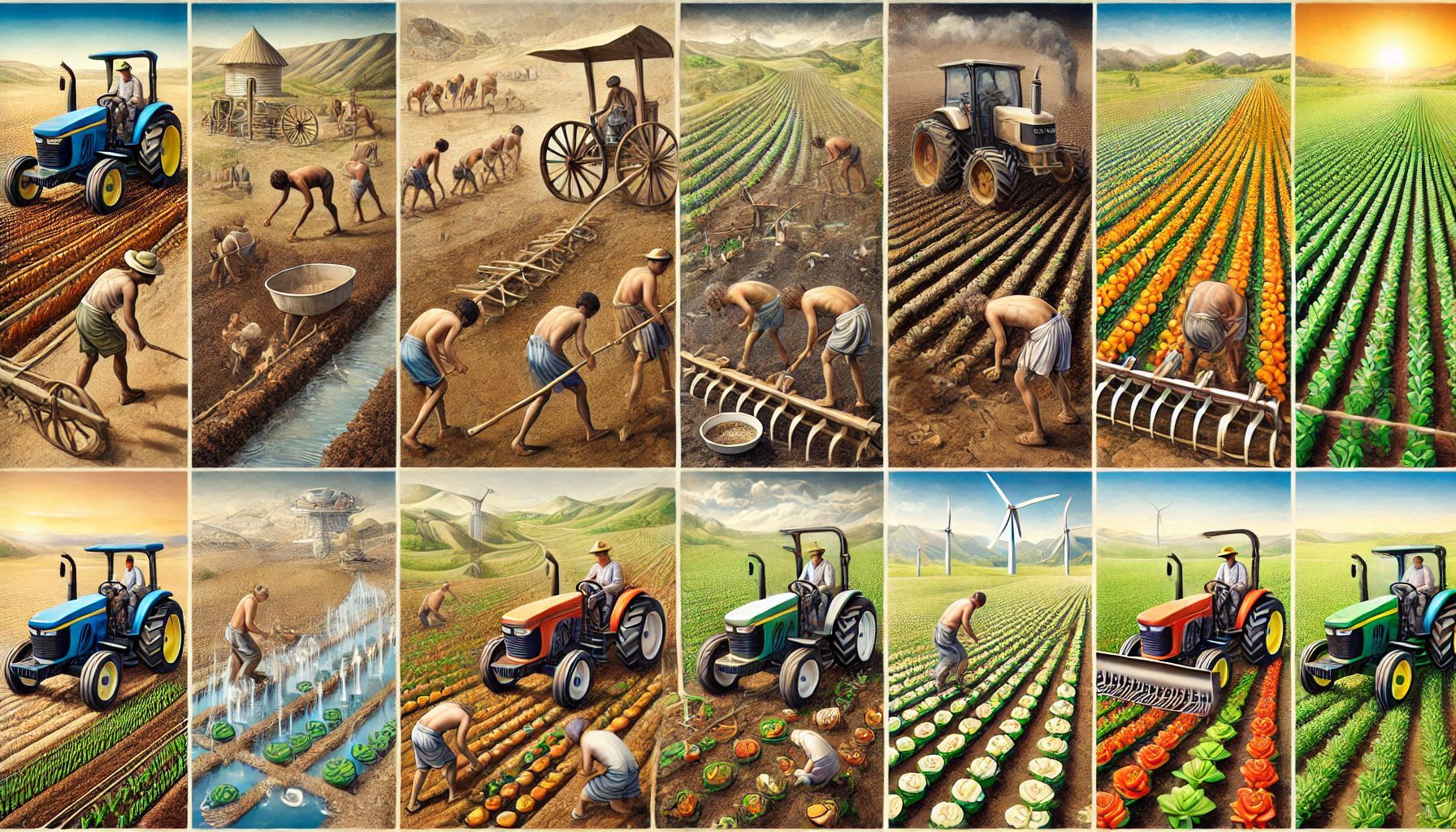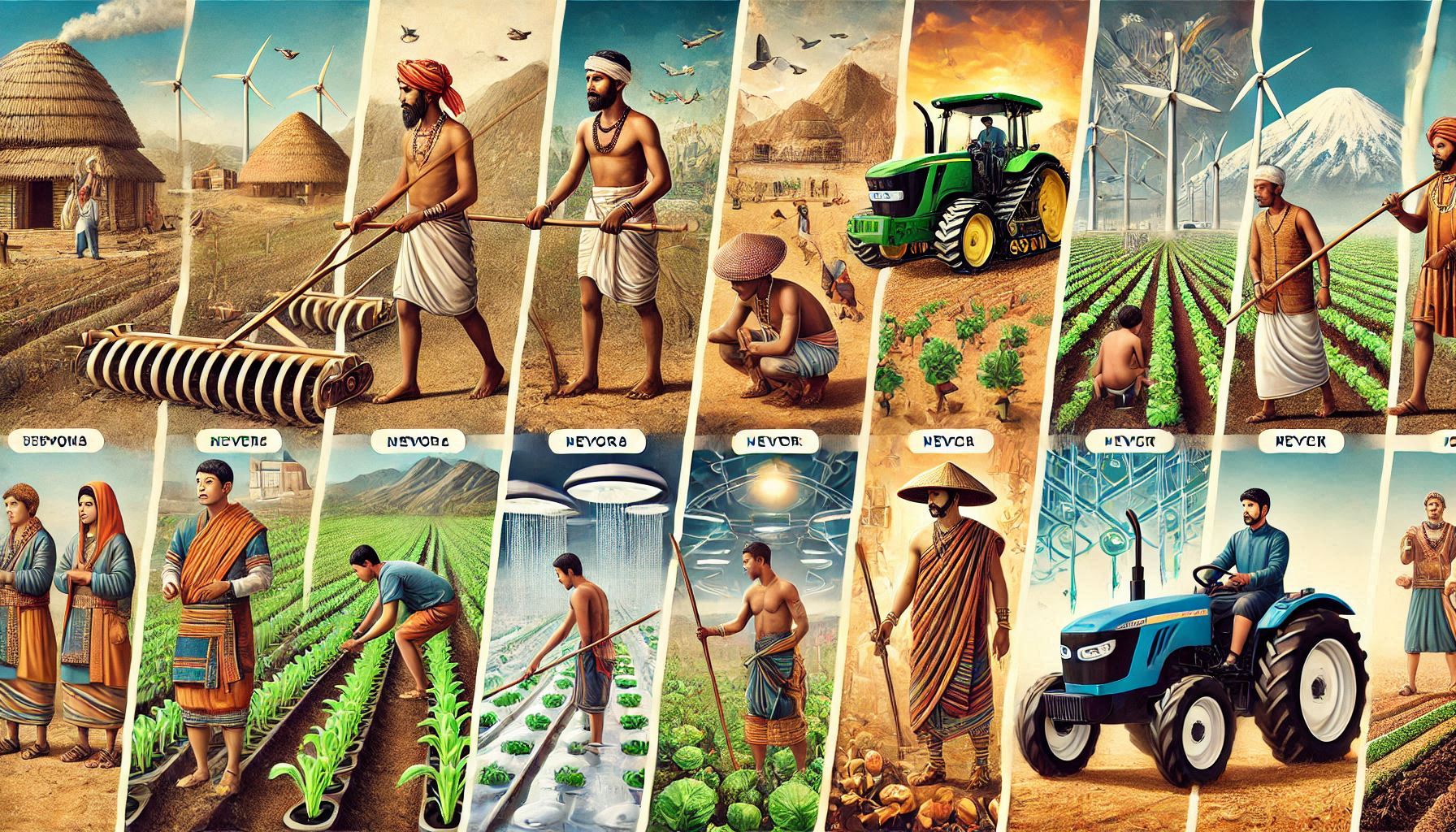Crops
- A crop is an organism grown and/or harvested for economic yield.
- Classification of crops aids in better understanding their cultivation and management.
- Crops can be classified based on ontogeny (life cycle), economic use, botany, seasons, and climate.
- Annual crops complete their life cycle within a single growing season. Examples: wheat, rice, maize.
- Biennial crops live for two seasons, producing vegetative growth in the first and seeds in the second. Examples: sugar beet, beetroot.
- Perennial crops live for three or more years. Examples: coconut, Napier grass.
- Cereals are cultivated for their starchy grains and are a staple food. Examples: rice, wheat, maize.
- Cereal grains are high in starch and provide energy-rich foods.
- Millets are small-grained cereals grown in dry regions. Major millets include sorghum, pearl millet, and finger millet.
- Pulses are legumes grown for their protein-rich seeds. Examples: red gram, black gram, green gram, and lentil.
- Pulse waste is used as green manure or cattle feed.
- Oilseeds are grown for their oil-rich seeds. Examples: groundnut, sesame, sunflower, and mustard.
- Sugar crops include sugarcane and sugar beet, cultivated for their sugar content.
- Fibre crops are grown for fiber extraction. Examples: cotton, jute, and mesta.
- Fodder crops are grown for animal feed, such as Bajra, Napier grass, and leguminous forages like lucerne.
- Spices and condiments enhance the flavor of food. Examples: ginger, garlic, turmeric, and cumin.
- Medicinal plants are used in the pharmaceutical industry. Examples: tobacco and mint.
- Beverages include crops used for drink preparation, such as tea, coffee, and cocoa.
- Kharif crops are grown during the rainy season, requiring warm, wet conditions. Examples: rice, maize, groundnut.
- Rabi crops are grown in the cooler, dry season. Examples: wheat, mustard, and barley.
- Summer crops are grown in hot, dry conditions. Examples: black gram, sesame.
- Tropical crops grow in warm climates. Examples: coconut, sugarcane.
- Sub-tropical crops grow in slightly cooler climates. Examples: rice, cotton.
- Temperate crops grow in cooler climates. Examples: wheat, barley.
- Polar crops thrive in extreme cold. Examples: all pines, pasture grasses.
- Alluvial soil is fertile and supports crops like rice, wheat, cotton, and sugarcane.
- Black soil is rich in clay and is ideal for cotton cultivation.
- Red soil is suitable for crops like groundnut, millets, and pulses.
- Laterite soil is rich in iron and aluminum and supports crops like tea, rubber, and spices.
- Desert soil is found in arid regions like Rajasthan and supports crops like date palm and millets.
- Forest and hill soil is found in mountainous regions and is rich in organic matter.
- Peaty and marshy soils are waterlogged and rich in organic matter.
- Problem soils include saline, alkali, and acidic soils, which require special management practices.
- Kharif season lasts from June to October and requires warm, wet weather.
- Rabi season lasts from October to February and requires cooler, dry weather.
- Summer crops grow from February to May and require hot, dry weather.
- Millets like sorghum and pearl millet are drought-resistant and important for food security in dry regions.
- Pulses are vital for protein intake and crop rotation, improving soil nitrogen content.
- Oilseeds like groundnut and sunflower are used in cooking and industrial applications.
- Sugarcane is used for sugar production, with by-products like molasses and bagasse used in various industries.
- Cotton is an important fiber crop, with the lint used in textiles and seed for oil production.
- Rice is the staple food for a large portion of the global population.
- Groundnut is a major oilseed and source of edible oil, with both the seeds and haulm used in various applications.
- Tea and coffee are major export crops in India, with tea cultivated primarily in Assam and Darjeeling.
- Spices like turmeric, coriander, and chillies are cultivated extensively in India and used worldwide.
- Coconut is an important tropical crop, providing oil, fiber, and other by-products.
- Wheat is a major food crop, grown primarily during the Rabi season in India.
- Barley is grown for both food and fodder, especially in the temperate regions.
- Sugar beet is a cold-season crop, primarily grown in temperate climates for sugar extraction.
- Jute is a fiber crop used for making bags, ropes, and other industrial products.
- Lentils are a crucial source of protein in vegetarian diets, especially in India.
- Soybean is an important pulse and oilseed crop, widely grown in India for its high protein content.
- Fodder crops like Napier grass and alfalfa are important for livestock feed.
- Sesame seeds are rich in oil and are used in cooking and medicinal applications.
- Castor is grown for its oil, which is used in industrial applications, particularly in the aviation industry.
- Mustard oil is widely used for cooking and in the production of biodiesel.
- Black gram (Urad dal) is essential in Indian cuisine and crop rotation.
- Sunflower oil is popular for its health benefits due to its high unsaturated fat content.
- Coconut oil is used in cooking and various industrial applications, especially in cosmetics.
- Rapeseed and mustard are important oilseed crops in India and are also used in biodiesel production.
- Millets require less water and are drought-tolerant, making them ideal for arid regions.
- Sugarcane is mainly grown in tropical regions and requires large amounts of water.
- Soybean is high in protein and used extensively in both food and animal feed.
- Red soil is commonly found in semi-arid regions and supports crops like cassava and groundnut.
- Laterite soils are acidic and found in areas with high rainfall, supporting crops like tea, rubber, and cashew.
- Black soil is particularly suited for cotton cultivation due to its high moisture retention.
- Alluvial soils are the most fertile in India and support a wide range of crops including rice, wheat, and sugarcane.
- Saline soils have high salt content and require crops that are salt-tolerant, such as rice and sugarcane.
- Alkali soils are high in sodium and can be improved using gypsum.
- Acidic soils require liming to neutralize acidity and improve crop growth.
- Desert soils are low in fertility and require irrigation for successful crop cultivation.
- Forest soils are rich in organic matter and support diverse vegetation.
- Peaty soils are waterlogged and have high organic matter content but are not suitable for most crops.
- Alluvial soil is ideal for rice cultivation due to its high nutrient content.
- Lateritic soil has high iron and aluminum content and is suitable for crops like rubber and tea.
- Black soil supports crops that require moisture retention, such as cotton and soybean.
- Red soil is suitable for groundnut and other drought-resistant crops.
- Problem soils like saline and alkali soils need specific reclamation techniques to support crop growth.
- Sodic soils are rich in sodium and require gypsum for reclamation.
- Acidic soils have low pH and require lime application for effective crop growth.
- Black soil shrinks during dry periods, forming deep cracks.
- Lateritic soil becomes very hard during dry periods and requires irrigation for crop cultivation.
- Alluvial soil can be classified into Khadar (newer) and Bhangar (older) based on its age.
- Desert soils are prone to erosion and require conservation techniques.
- Peaty soils are found in regions with high rainfall and abundant organic material.
- Saline soils are found in coastal and arid regions.
- Sodic soils are characterized by the presence of exchangeable sodium, making them alkaline.
- Alluvial soils are found in river basins and deltas and are rich in nutrients.
- Red soil is often shallow and acidic, requiring careful management for optimal crop growth.
- Black soil is rich in minerals but requires proper moisture management.
- Laterite soil supports tropical crops but is not ideal for large-scale agriculture without proper amendment.
- Desert soils are found in regions with limited rainfall and need irrigation for agricultural use.
- Forest soils are found in the foothills and support dense vegetation.
- Peaty soils are found in wetland regions, especially in the northeast.
- Saline soils in coastal areas can be reclaimed for rice farming.
- Alkali soils are typically found in areas with high evaporation and low rainfall.
- Soil erosion is a problem in regions with steep slopes and heavy rainfall.
- Waterlogging can occur in poorly drained soils and affects crop growth.
- Soil fertility can be improved with the application of organic matter and chemical fertilizers.
- Soil testing is essential for determining nutrient deficiencies and tailoring fertilization for optimal crop production.










